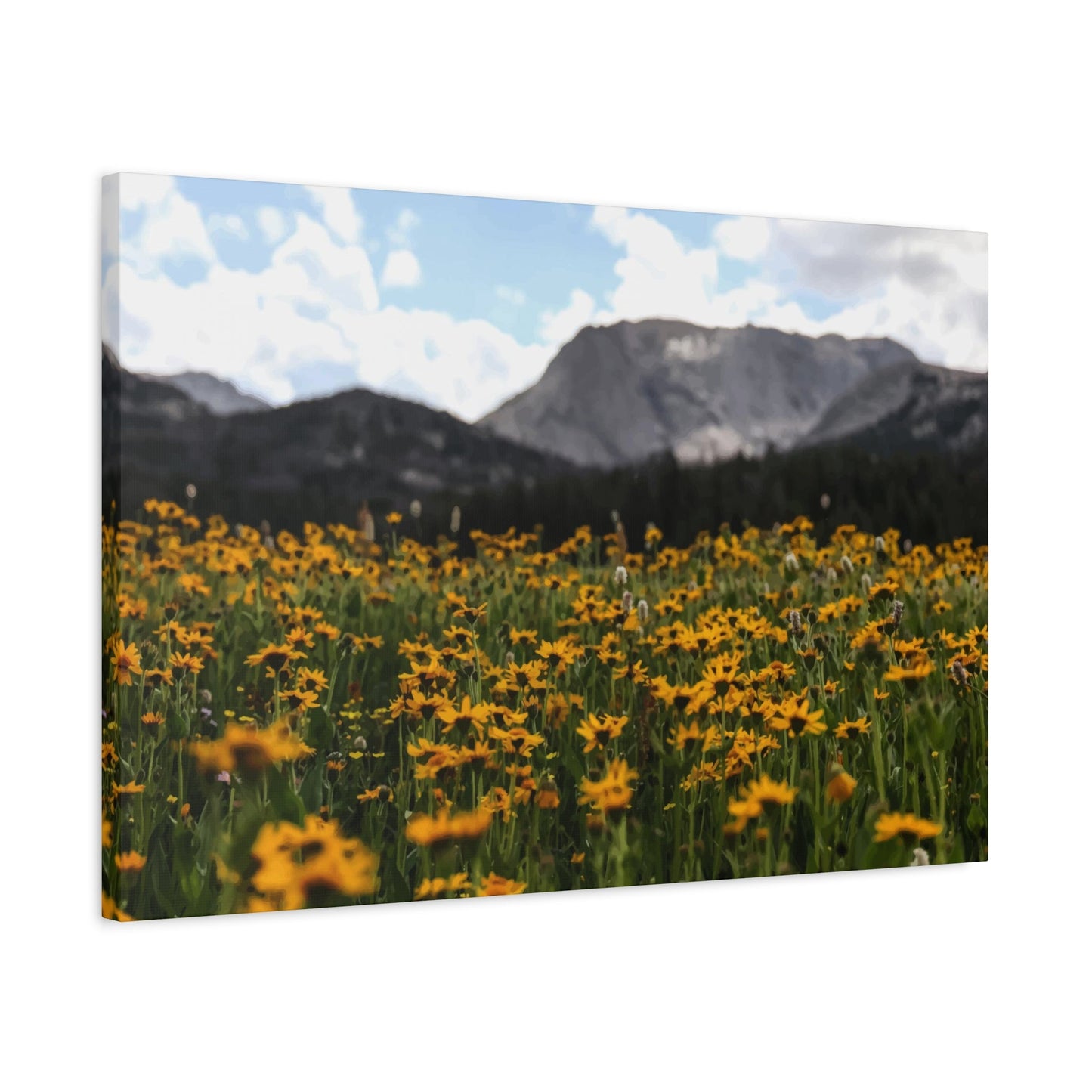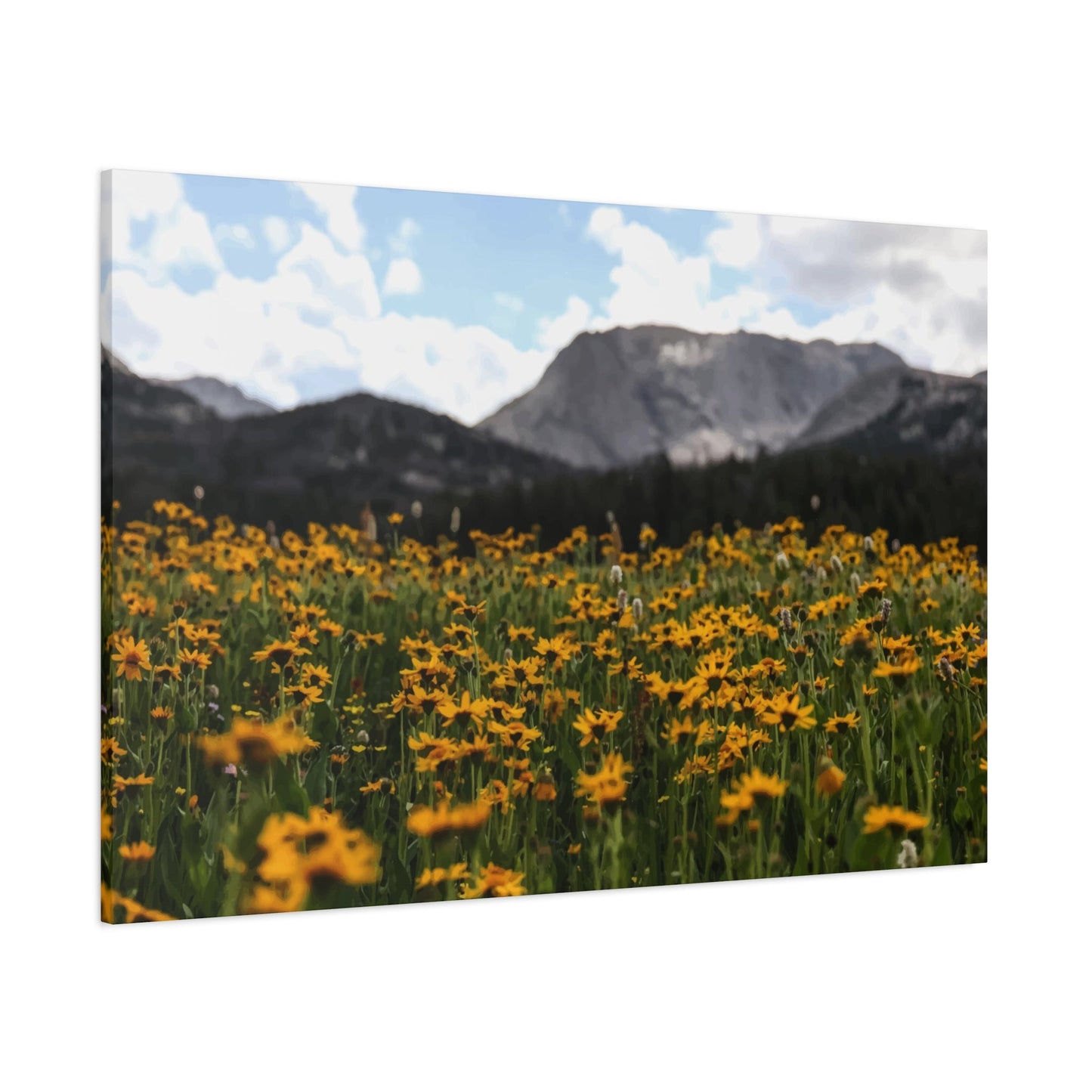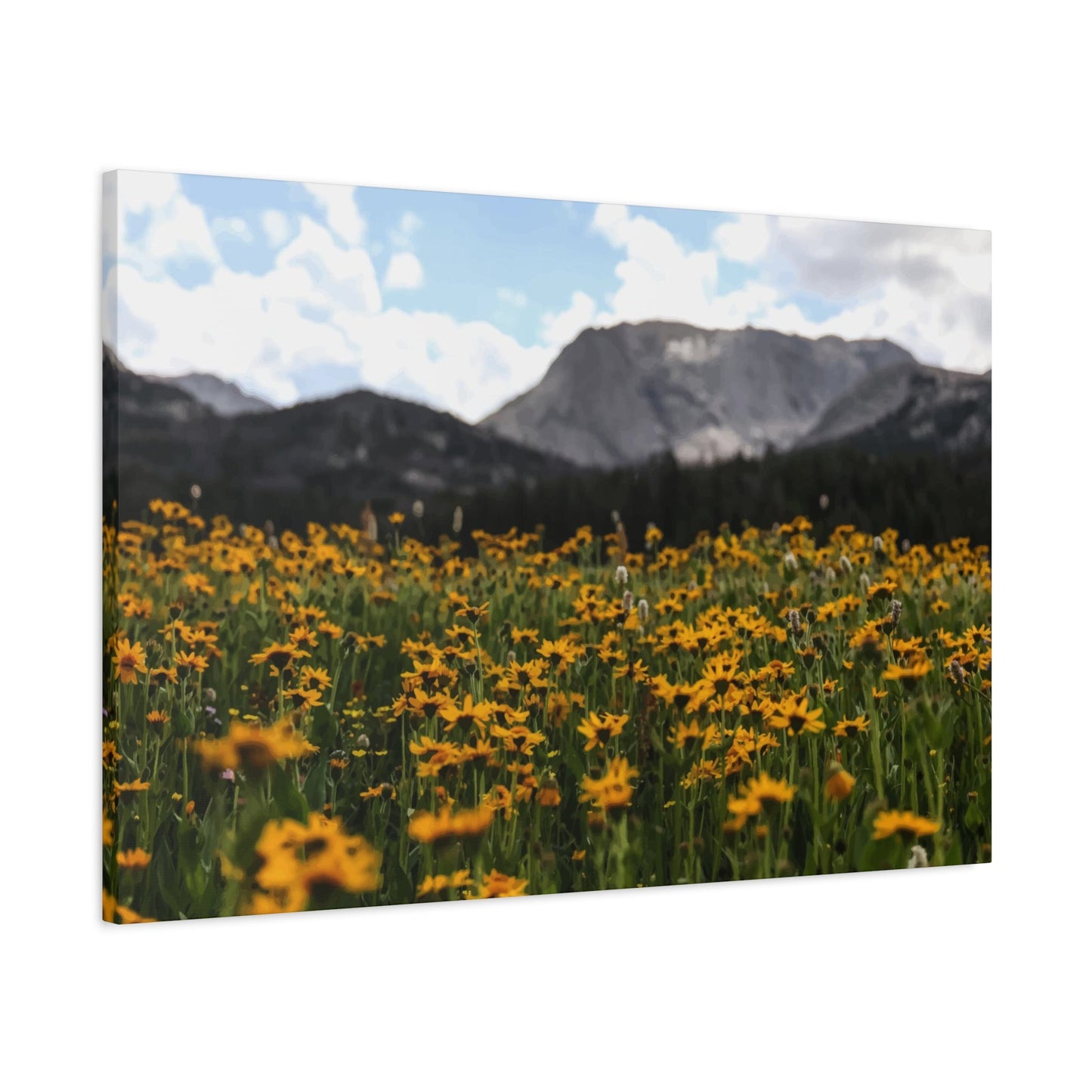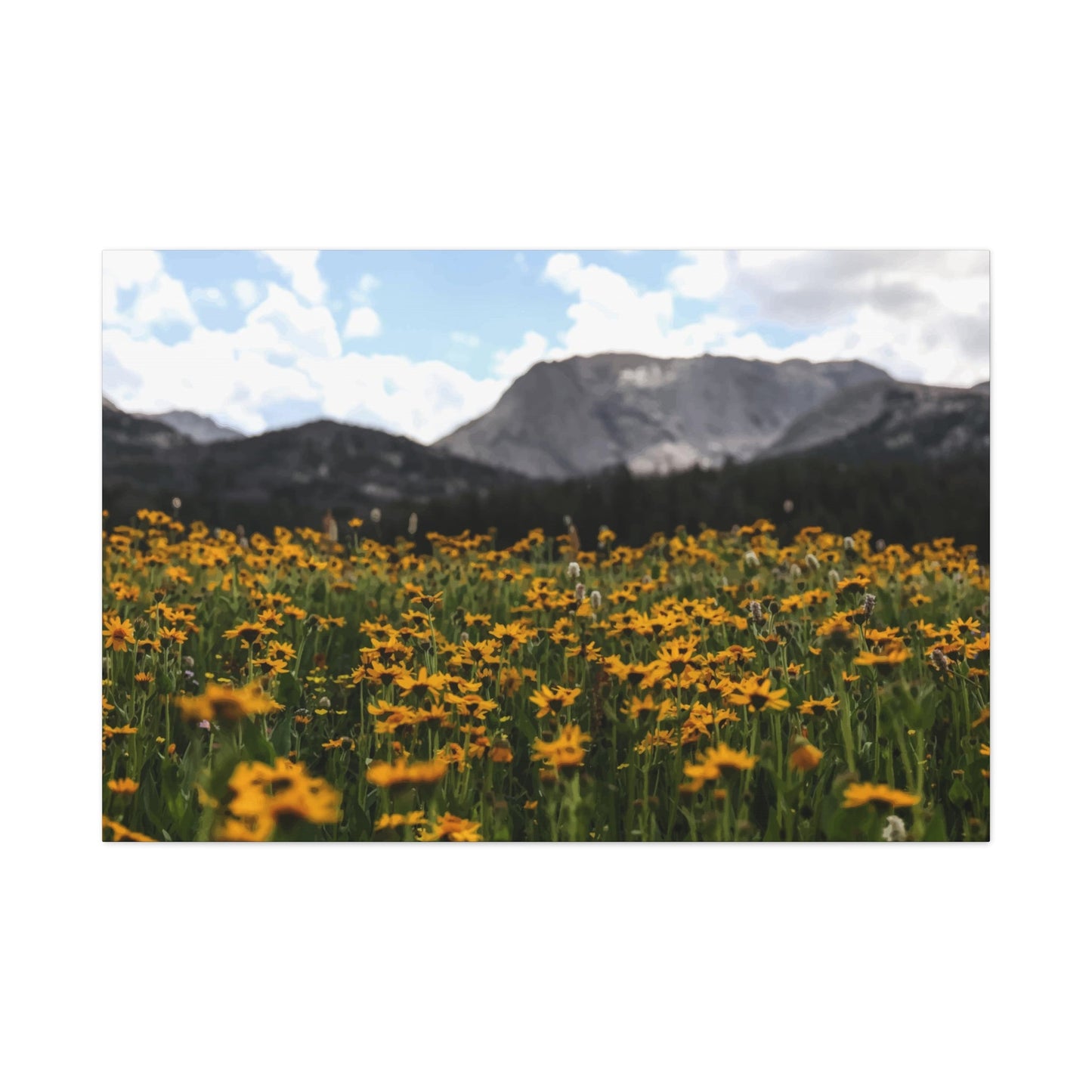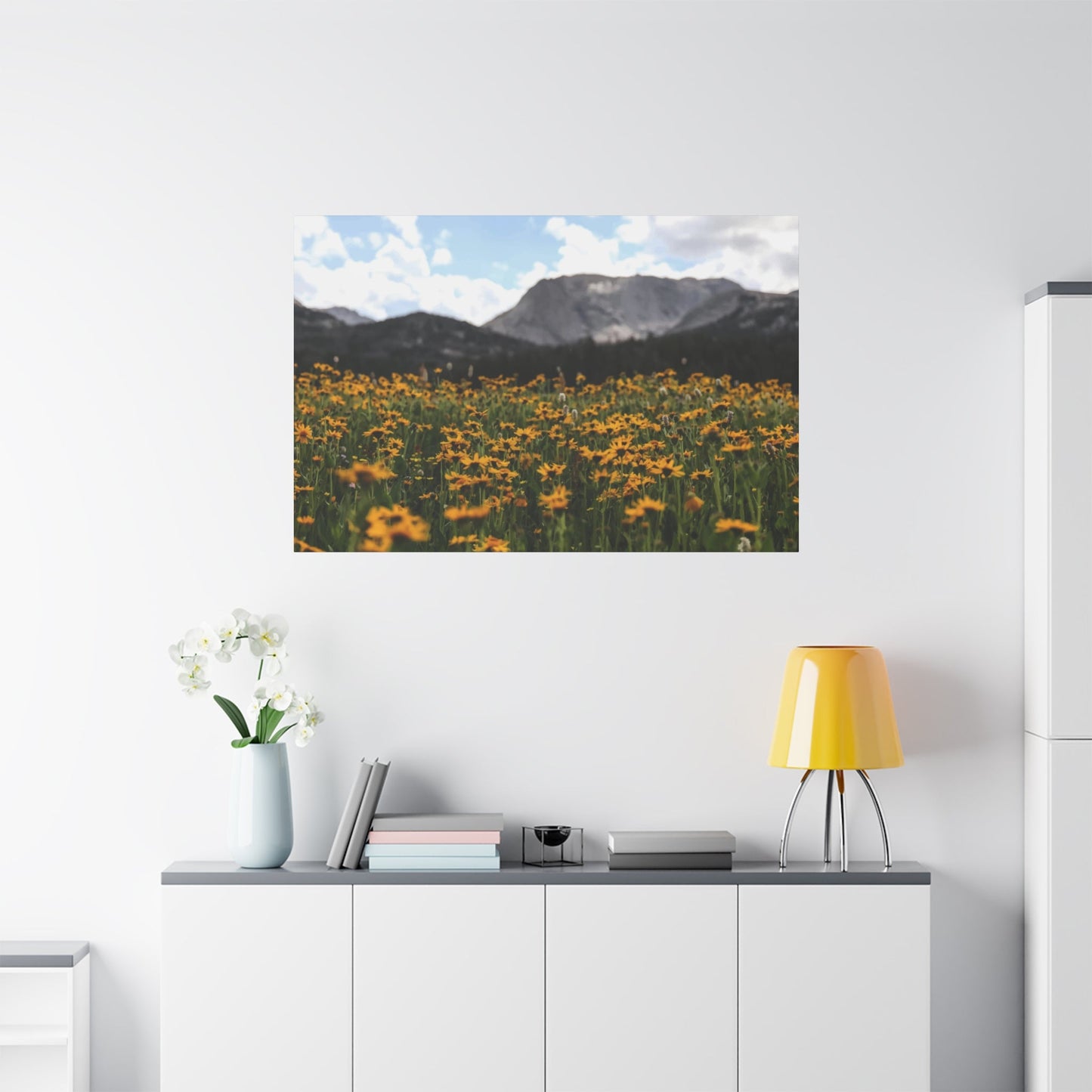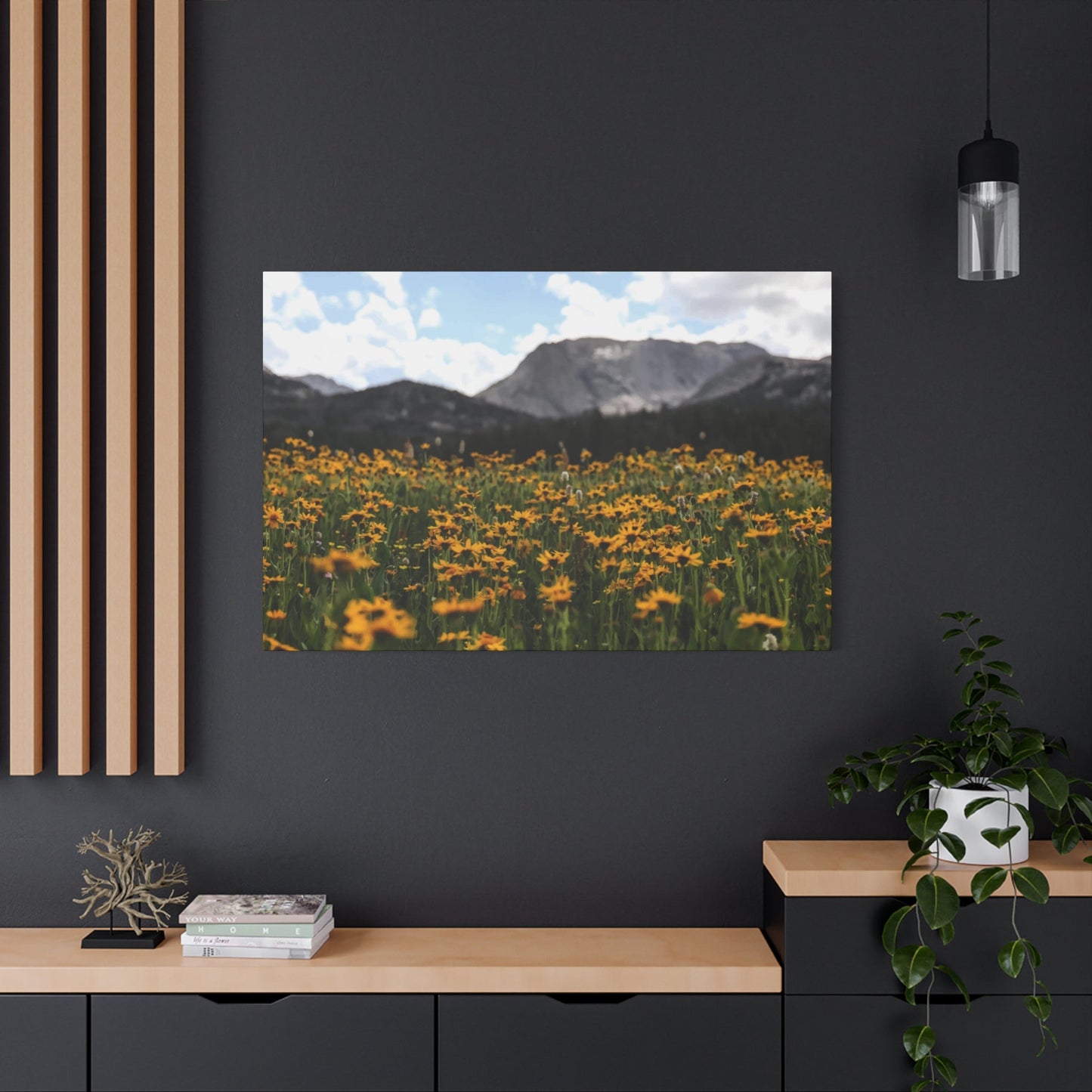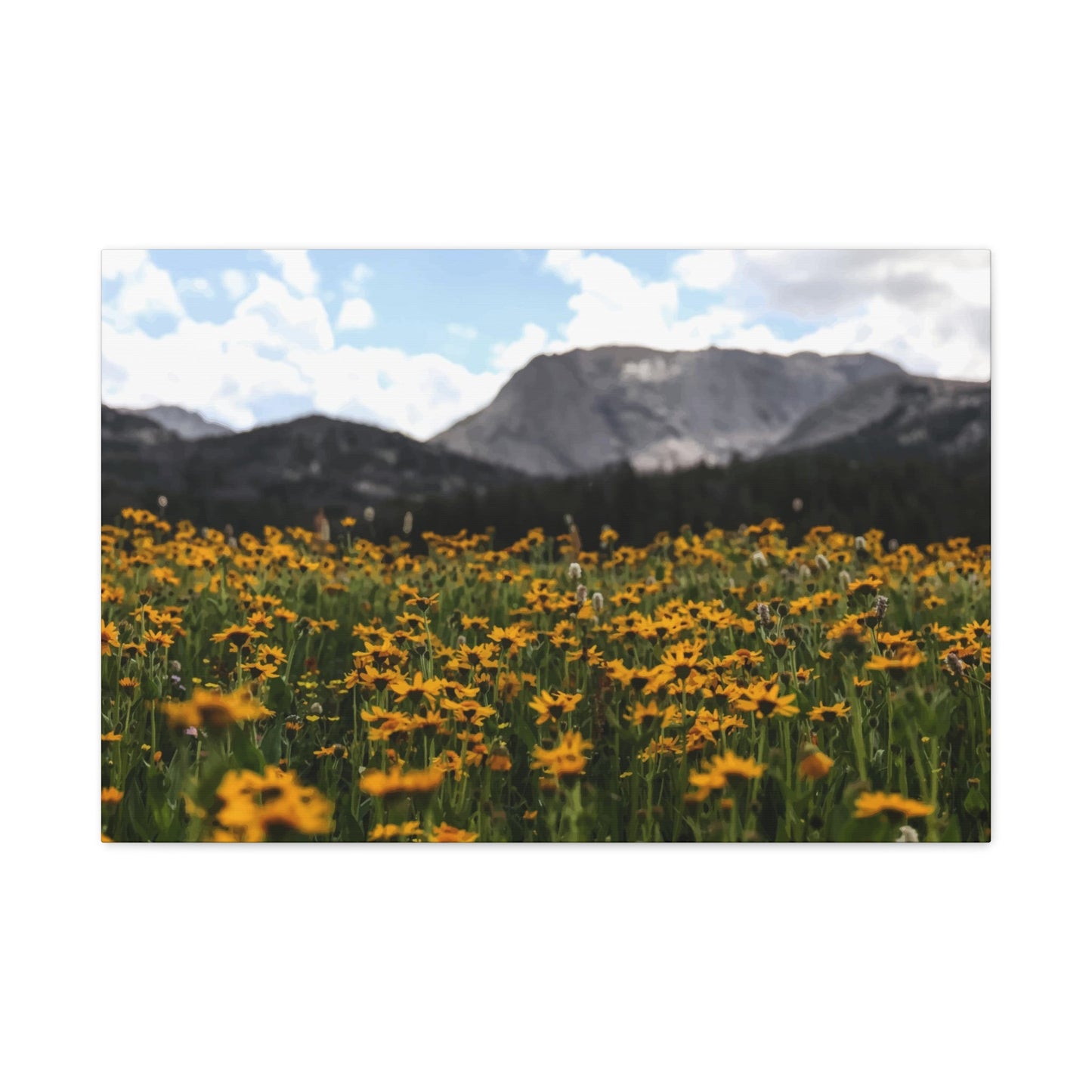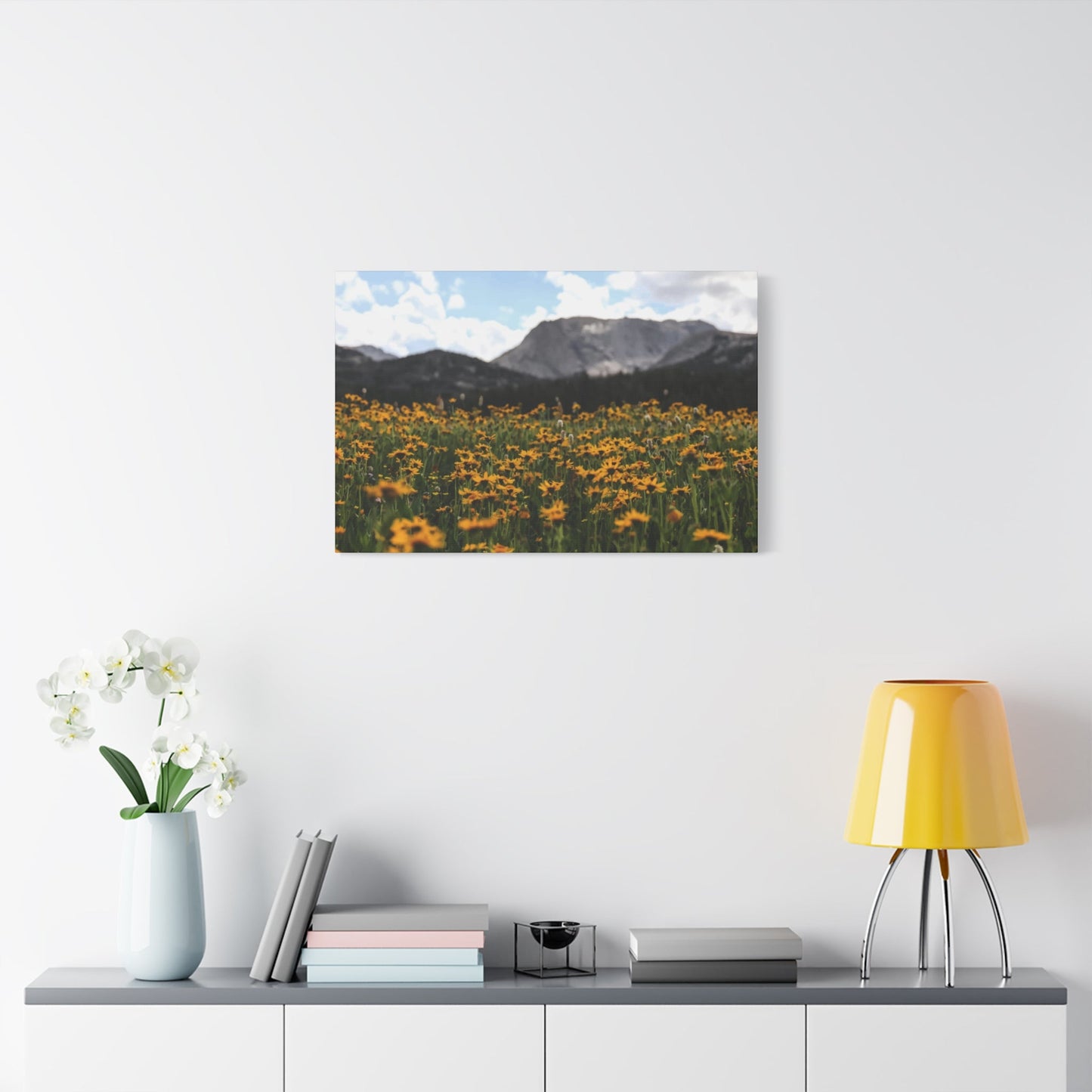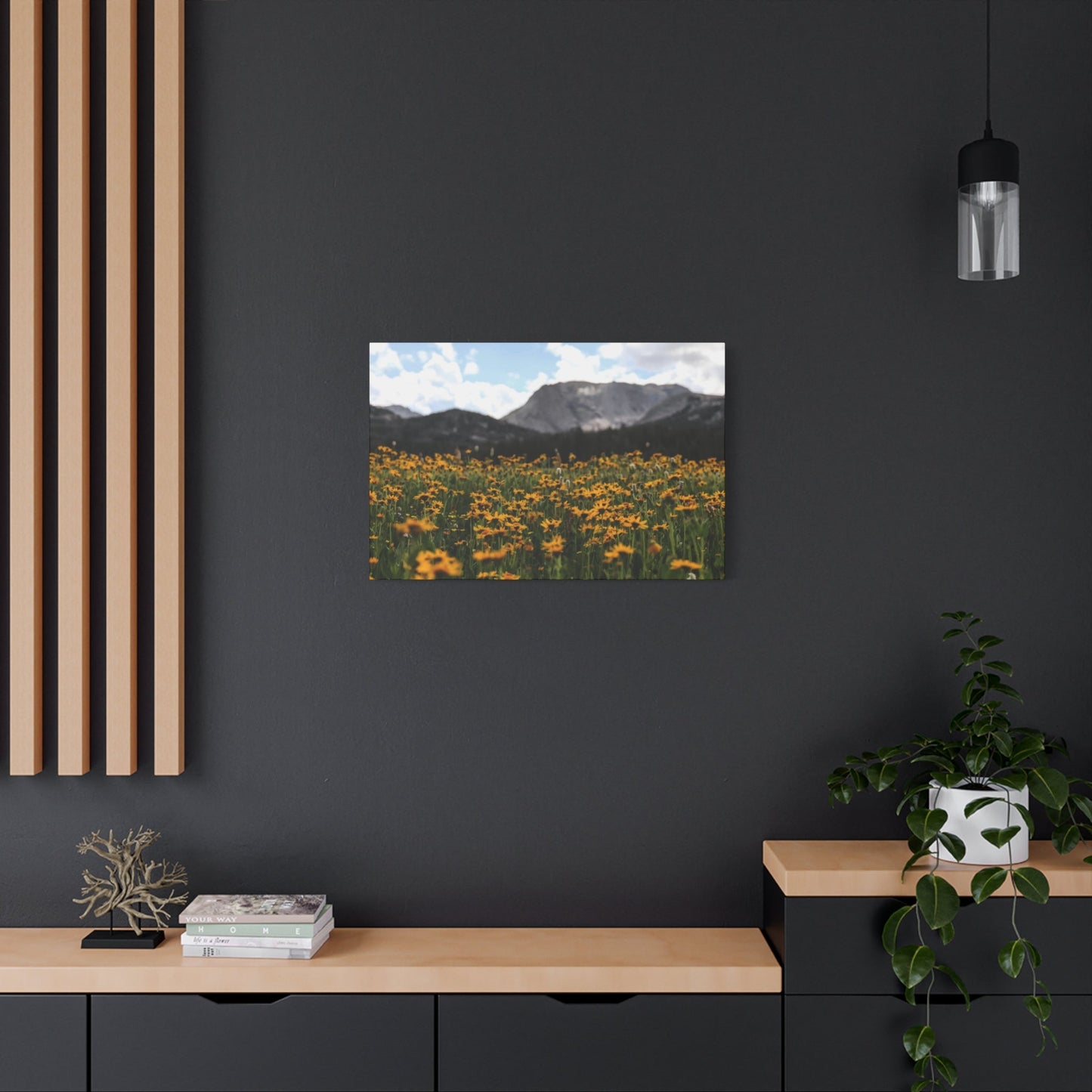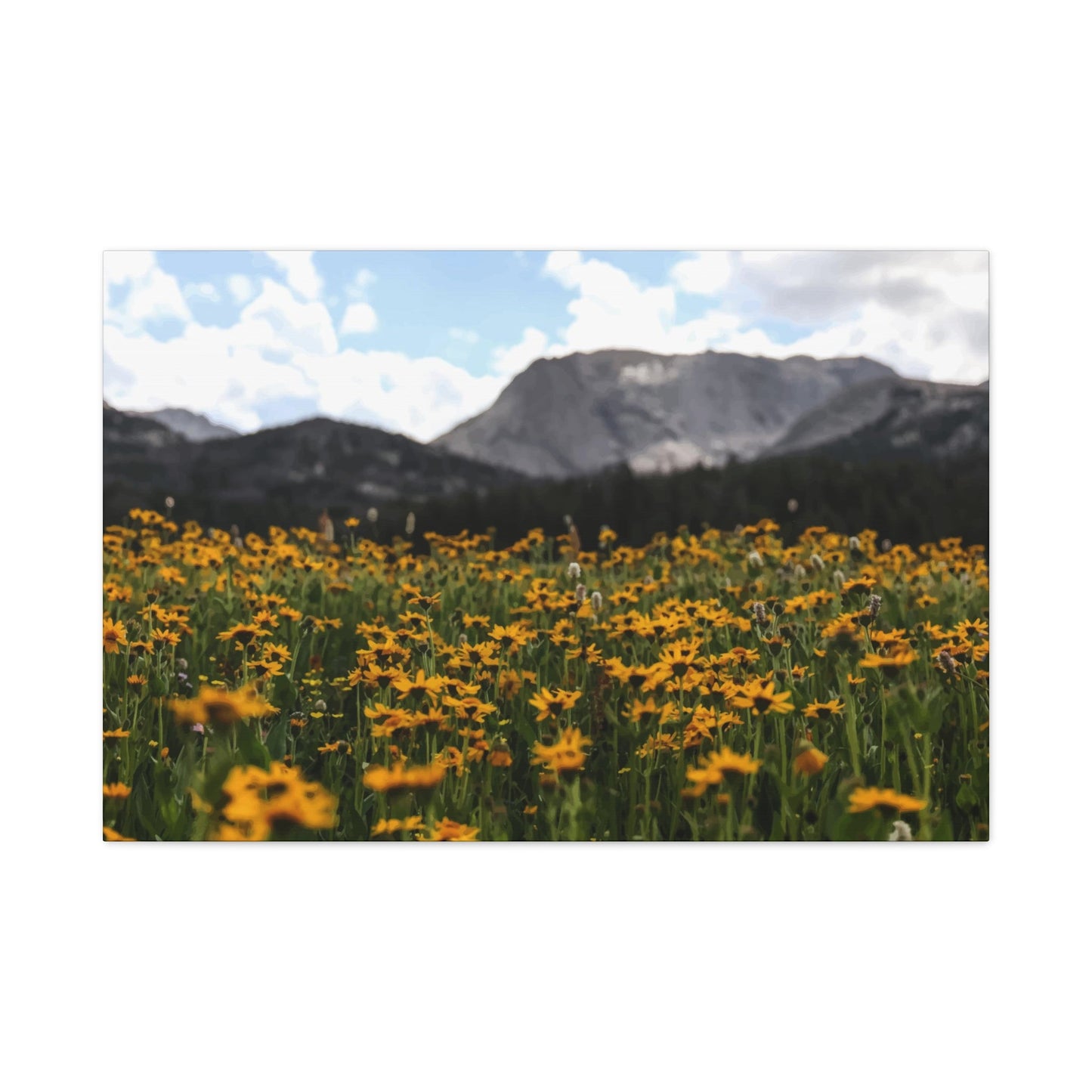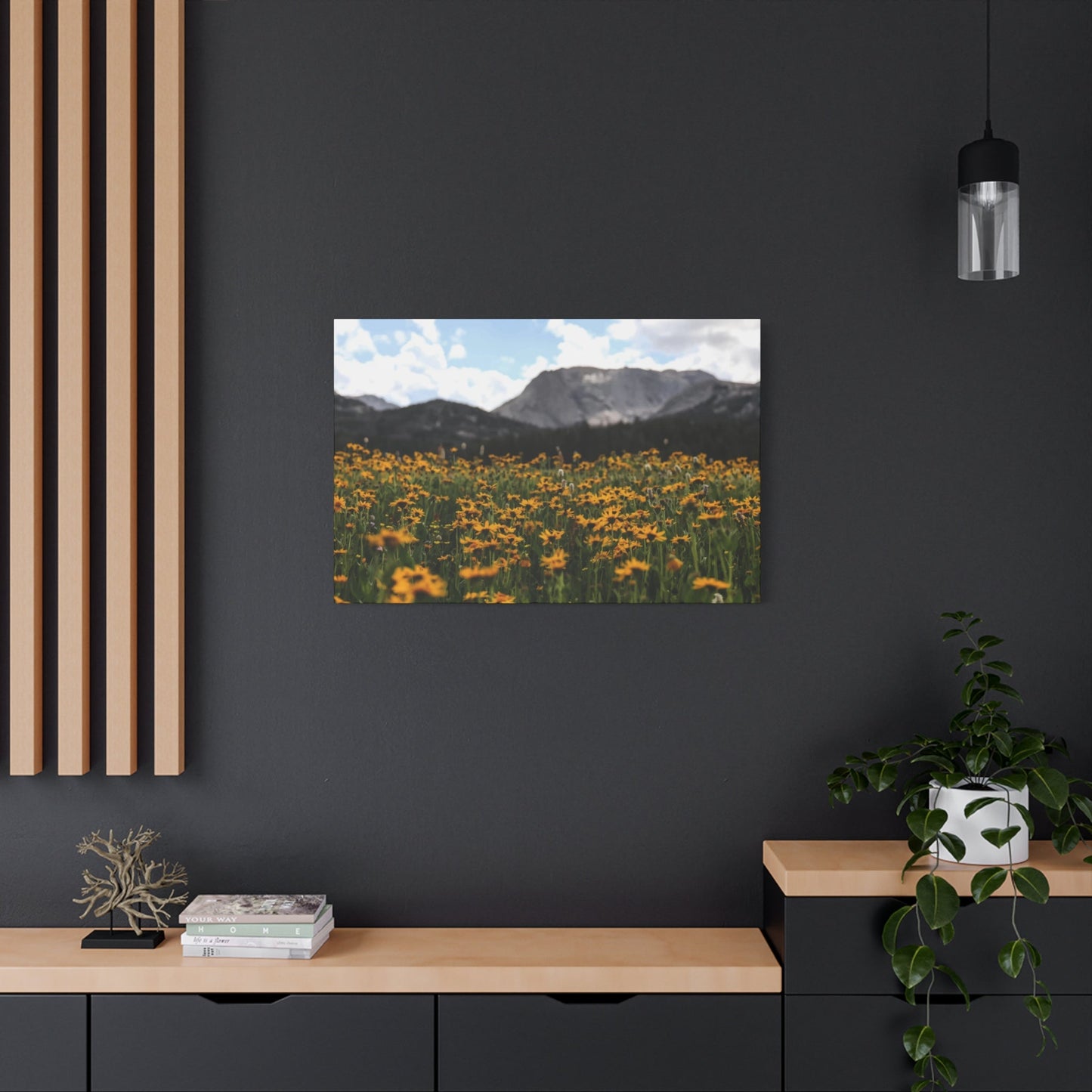Brighten Your Space with Sunflower Garden Wall Art: Tips for Selection, Display, and Care
Sunflower garden wall art possesses an extraordinary ability to inject life and vibrancy into any living environment. These magnificent floral pieces serve as powerful mood enhancers, bringing the warmth and optimism of summer gardens directly into homes throughout every season. The golden petals and rich brown centers characteristic of sunflower imagery create instant visual impact, drawing the eye and establishing focal points that naturally command attention without overwhelming the surrounding environment.
When selecting sunflower garden wall art for brightening purposes, consider the natural light patterns within your room. Pieces featuring bright yellow and golden tones work exceptionally well in rooms with northern exposure or limited natural sunlight, as they compensate for the cooler light quality and create the illusion of sun-filled environments. The radiant qualities inherent in sunflower artwork literally reflect light, bouncing illumination throughout the room and making even the darkest corners feel more welcoming and open.
The psychological impact of sunflower garden wall art extends beyond simple aesthetics. Research in environmental psychology demonstrates that exposure to yellow tones and floral imagery reduces stress levels, promotes positive thinking, and enhances overall emotional wellbeing. Hanging sunflower garden prints in frequently used areas like kitchens, breakfast nooks, or home offices creates daily touchpoints with nature-inspired beauty that subtly but significantly influences mood and productivity.
Different artistic interpretations of sunflower gardens offer varying brightening effects. Realistic botanical prints with detailed petal structures and authentic color gradations create sophisticated elegance suitable for formal living areas. Meanwhile, impressionistic renderings with loose brushstrokes and heightened color saturation deliver maximum visual impact in casual family rooms or children's play areas. The key lies in matching the artistic style to both the room's function and the desired emotional atmosphere.
Placement height significantly affects how effectively sunflower garden wall art brightens a room. Hanging pieces at eye level ensures immediate visual engagement upon entering, while slightly higher placement draws the gaze upward, creating the perception of taller ceilings and more expansive surroundings. In rooms with low ceilings, vertical orientation sunflower prints emphasize height, while horizontal arrangements work better in rooms with already generous vertical dimensions.
The surrounding color palette dramatically influences how sunflower garden wall art functions as a brightening element. Against neutral backgrounds like cream, beige, or soft gray, sunflower imagery pops with particular intensity, creating dramatic contrast that energizes the entire room. Conversely, when displayed against warmer backdrops in terracotta, rust, or golden hues, sunflower art creates cohesive, enveloping warmth that feels comforting rather than stimulating.
Lighting design plays a crucial role in maximizing the brightening potential of sunflower garden wall art. Picture lights mounted above or below the artwork highlight texture and color depth, especially important for canvas prints with visible brushstrokes or dimensional elements. Track lighting allows for adjustable focus, enabling homeowners to emphasize their sunflower art during evening hours when natural light fades and supplementary brightening becomes most valuable.
The Cheerful Colors of Sunflower Wall Art
The color palette inherent in sunflower wall art represents one of nature's most uplifting combinations, blending warm golden yellows with rich chocolate browns and vibrant green foliage accents. These hues trigger specific psychological responses rooted in human evolutionary history, where yellow signaled ripe fruit and abundant food sources while browns indicated fertile soil and growing potential. Modern applications of these colors in artistic representations maintain these subconscious associations, creating environments that feel inherently welcoming and prosperous.
Traditional sunflower wall art emphasizes pure, saturated yellows ranging from pale buttercream tones to deep marigold shades. Each variation along this spectrum creates distinctly different atmospheric effects. Lighter lemon yellows evoke freshness and clean energy, making them ideal for kitchens, bathrooms, or breakfast areas where morning energy is desired. Deeper golden yellows radiate warmth and sophistication, better suited to living rooms, dining areas, or master bedrooms where relaxation and comfort take priority.
The brown tones present in sunflower centers provide essential grounding elements that prevent yellow from becoming visually overwhelming. These earthy browns range from milk chocolate to nearly black espresso shades, each offering different levels of contrast against the bright petals. Artists who emphasize darker centers create bold, graphic impact suitable for contemporary minimalist settings, while those rendering softer, lighter brown tones produce gentler, more romantic interpretations appropriate for cottage-style or shabby chic environments.
Green components in sunflower wall art, representing stems, leaves, and surrounding garden elements, introduce cooling balance to the predominantly warm color scheme. The specific green tones selected by artists significantly impact overall visual temperature. Blue-greens create crisp, fresh aesthetics reminiscent of spring gardens, while yellow-greens harmonize seamlessly with the sunflower petals, creating unified, cohesive compositions. Olive and sage greens introduce sophisticated neutrality, allowing the sunflower blooms to dominate without competing color elements.
Contemporary interpretations of sunflower wall art often incorporate unexpected color palettes that push beyond traditional botanical accuracy. Artists experimenting with purple and blue undertones in petals create dramatic, fantastical renderings that appeal to modern sensibilities while maintaining recognizable sunflower forms. These unconventional color choices allow sunflower art to coordinate with broader color schemes, making these pieces adaptable to homes with established color palettes that might not naturally accommodate traditional yellow tones.
Monochromatic sunflower wall art explores the full tonal range of a single color family, creating sophisticated subtlety while preserving the distinctive sunflower silhouette. Black and white renderings emphasize form, texture, and composition rather than color impact, suitable for contemporary or minimalist environments where color restraint is valued. Sepia-toned versions evoke vintage nostalgia, particularly effective in farmhouse-style settings or rooms decorated with antique furnishings.
The color saturation level in sunflower wall art determines its visual impact and appropriate placement. Highly saturated, vibrant pieces with pure, intense colors serve as powerful focal points capable of anchoring entire room designs. These bold renderings work best as standalone statement pieces without competing artwork nearby. Conversely, desaturated or muted sunflower prints with softer, grayed tones blend more subtly into existing decorative schemes, functioning as complementary accents rather than dominant features.
Capturing Nature's Beauty: Sunflower Gardens on Canvas
Canvas as a medium offers unique advantages for reproducing sunflower garden imagery, providing texture, depth, and authenticity that flat paper prints cannot match. The woven fabric structure of canvas creates subtle dimensionality that enhances the organic qualities of sunflower subjects, with the material's texture mimicking the natural irregularities found in actual flower petals and garden settings. This textural element becomes particularly noticeable when viewed from angles where light grazes the surface, creating shadow patterns that add visual interest.
High-quality sunflower garden canvas prints employ giclée printing technology, which uses archival-quality inks and museum-grade canvas materials to ensure longevity and color accuracy. These professional-grade reproductions capture minute details from original paintings or photographs, including subtle color gradations, texture variations, and tonal nuances that lesser printing methods miss. The investment in premium canvas prints pays dividends through decades of enjoyment without significant fading or deterioration.
Gallery-wrapped canvas presentations stretch the printed image around wooden frames, eliminating the need for additional framing and creating clean, contemporary presentations. This mounting style works particularly well for sunflower garden art, as the three-dimensional quality of wrapped edges enhances the natural, organic feeling of the subject matter. Edge printing options allow the image to continue around the sides, creating finished appearances from all viewing angles.
Artist-created original sunflower garden canvases represent the pinnacle of this art form, offering one-of-a-kind pieces with genuine brushstroke textures and unique color mixing visible on the surface. Collecting original sunflower paintings provides opportunities to support living artists while acquiring artwork that appreciates in value over time. Original canvases also guarantee absolute uniqueness, ensuring no one else possesses an identical piece.
Mixed media approaches on canvas combine traditional painting techniques with collage elements, textured pastes, or embedded objects to create highly dimensional sunflower garden art. These innovative pieces blur boundaries between painting and sculpture, offering tactile interest alongside visual appeal. Raised petals created with modeling paste, actual dried botanical elements incorporated into the composition, or metallic foil accents add unexpected elements that elevate sunflower art beyond conventional presentations.
Small vs Large Sunflower Garden Prints
Scale selection represents one of the most critical decisions when incorporating sunflower garden prints into living environments, as size directly impacts visual weight, room proportions, and overall decorative effectiveness. Small sunflower prints, typically ranging from eight by ten inches to sixteen by twenty inches, offer versatility and flexibility that larger pieces cannot match. These compact formats work exceptionally well in gallery wall arrangements where multiple pieces create collective impact, in tight locations like powder rooms or stairway landings where larger artwork would overwhelm, or as part of layered decorative vignettes on shelves or mantels.
The intimacy of small sunflower garden prints creates opportunities for detailed appreciation that larger works cannot provide. Viewers naturally move closer to examine smaller artwork, allowing intricate brushwork, subtle color variations, and fine details to be properly appreciated. This characteristic makes small-format prints ideal for hallways where viewers pass closely, or in seating areas where people naturally settle within close viewing distance.
Budget considerations often favor small sunflower prints, as these pieces typically cost significantly less than larger formats while still delivering authentic artistic quality. This affordability allows collectors to acquire multiple pieces, creating opportunities for seasonal rotation or display variety without substantial financial investment. Beginning collectors can build substantial sunflower garden art collections over time by focusing on smaller formats before potentially investing in larger statement pieces.
Large sunflower garden prints, generally measuring thirty by forty inches or greater, function as powerful focal points capable of anchoring entire room designs. These substantial pieces command immediate attention upon entering a room, establishing visual hierarchy and providing clear design direction for surrounding furnishings and accessories. Single oversized sunflower prints deliver maximum impact with minimal complexity, ideal for those who prefer clean, uncluttered decorative approaches.
Proportional relationships between artwork size and wall dimensions follow general guidelines that ensure balanced, harmonious presentations. Large walls spanning eight feet or more in width typically require artwork measuring at least forty inches in one dimension to avoid appearing lost or insignificant. Conversely, smaller walls under four feet wide benefit from prints measuring twenty-four inches or less to maintain appropriate scale relationships and prevent overwhelming the available surface area.
The relationship between furniture size and sunflower garden print dimensions requires careful consideration for cohesive room compositions. Artwork displayed above sofas should measure approximately two-thirds to three-quarters of the furniture's width to create visual balance. This guideline translates to prints measuring fifty to sixty inches wide for standard seven-foot sofas. However, multiple smaller prints arranged in horizontal groupings can achieve similar width coverage while offering more visual variety.
Ceiling height influences optimal sunflower garden print size selection significantly. Standard eight-foot ceilings accommodate artwork up to approximately forty inches in height before proportions begin feeling cramped or overwhelming. Homes with nine-foot or higher ceilings can successfully display much larger vertical pieces, with some grand galleries featuring sunflower prints measuring six feet or taller that take full advantage of generous vertical dimensions.
Caring for Sunflower Wall Art Canvas Prints
Proper maintenance and care practices extend the lifespan of sunflower wall art canvas prints indefinitely, preserving color vibrancy, surface integrity, and overall appearance for generations of enjoyment. Unlike original paintings that require specialized conservation treatments, canvas prints benefit from straightforward care routines that any homeowner can implement successfully with basic supplies and minimal time investment.
Dusting represents the most fundamental and frequent maintenance activity for sunflower canvas prints. Accumulated dust particles not only dull appearance and obscure color vibrancy but can also attract moisture that potentially damages canvas fibers or printing inks over time. Weekly or biweekly dusting using soft, dry microfiber cloths removes surface debris without abrading the printed surface. Gentle sweeping motions following the canvas weave direction prevent catching and pulling threads, while avoiding excessive pressure protects printing ink layers from unintentional buffing or removal.
Specialized dusting tools designed for artwork offer advantages over standard household dusting implements. Soft-bristled artist brushes or photographer's blower brushes effectively remove dust from textured canvas surfaces without physical contact that might damage delicate areas. Compressed air canisters provide touchless dust removal, though users must maintain appropriate distance and use brief bursts to avoid moisture accumulation from propellant condensation.
Environmental controls significantly impact the longevity of sunflower canvas prints by moderating factors that accelerate deterioration. Relative humidity levels between forty and fifty-five percent prevent canvas fibers from becoming either excessively dry and brittle or damp and vulnerable to mold growth. Dehumidifiers in humid climates or humidifiers in arid regions maintain stable moisture levels that preserve canvas integrity. Temperature stability matters equally, with consistent readings between sixty-five and seventy-five degrees Fahrenheit preventing expansion and contraction cycles that stress canvas fibers and adhesives.
Light exposure represents the most significant threat to long-term preservation of sunflower wall art canvas prints, as ultraviolet radiation breaks down both canvas fibers and printing inks, causing fading, discoloration, and eventual brittleness. Direct sunlight exposure should be avoided completely, while even indirect natural light deserves management through window treatments like UV-filtering films, sheer curtains, or adjustable blinds. Rotating displayed artwork seasonally prevents cumulative damage to any single piece, distributing light exposure across collections rather than concentrating it on permanently displayed works.
Using Sunflower Art to Create Warm Atmospheres
Sunflower art possesses an innate ability to generate warmth and welcoming ambiance in any environment, making rooms feel instantly more inviting and comfortable to occupants and visitors alike. This warming effect stems from multiple factors working in concert: the predominantly yellow color palette triggers psychological associations with sunshine and happiness, the organic floral subject matter connects inhabitants with nature's comforting presence, and the generally cheerful, uplifting subject matter counteracts sterile or cold architectural elements.
Strategic placement of sunflower art amplifies its warming capabilities significantly. Entryways and foyers decorated with sunflower prints immediately establish welcoming tones that greet arriving guests with visual warmth before physical warmth from heating systems engages. This first impression sets positive emotional foundations for entire visits, making guests feel immediately comfortable and valued. Positioning sunflower art directly in sightlines from main entrances ensures this welcoming impact occurs instantaneously upon arrival.
Living rooms and family gathering locations benefit tremendously from sunflower art's warming influence, as these communal areas serve as relationship hubs where emotional comfort enhances social connection. Large sunflower prints positioned above fireplaces or on primary seating walls establish focal points that naturally draw people together while simultaneously creating the cozy atmosphere that encourages lingering conversation and relaxed interaction. Multiple smaller sunflower prints scattered throughout living areas distribute warming effects evenly rather than concentrating them in single locations.
Dining areas enhanced with sunflower art gain ambiance that elevates everyday meals into special occasions while making formal dinners feel more approachable and relaxed. The warm golden tones complement natural wood dining furniture beautifully, creating harmonious compositions that feel cohesive and intentional. Sunflower art also stimulates appetite through its association with gardens, fresh produce, and natural abundance, making it functionally appropriate for dining locations beyond purely aesthetic considerations.
Bedrooms transformed with sunflower art become personal retreats that offer emotional comfort alongside physical rest. The warming qualities of sunflower imagery counteract the coldness that sometimes characterizes modern bedroom furniture and crisp linens, adding softness and gentleness that promotes relaxation. However, sunflower art in bedrooms should be selected thoughtfully, avoiding overly vibrant or energizing renditions that might interfere with sleep. Softer, more muted sunflower prints or those incorporating calming blues and greens alongside traditional yellows create better bedroom atmospheres.
Home offices and workspace areas often feel clinical or impersonal due to necessary equipment and functional furniture that prioritizes productivity over comfort. Introducing sunflower art into these environments humanizes and warms technical surroundings without compromising professional functionality. The cheerful nature of sunflower imagery also combats isolation or stress that sometimes accompanies solitary work periods, providing visual reminders of natural beauty and outdoor experiences during long indoor working hours.
Framing Ideas for Sunflower Garden Paintings
Frame selection for sunflower garden paintings dramatically influences final presentation quality, visual impact, and decorative cohesion with surrounding environments. The right frame enhances and complements the artwork while the wrong choice detracts from or even completely overwhelms the painting itself. Multiple factors guide frame selection, including artistic style of the painting, room decor aesthetic, color relationships, and practical considerations like budget and installation requirements.
Traditional wood frames in medium to dark finishes provide classic elegance that suits realistic sunflower paintings with detailed botanical accuracy and refined technique. Cherry, walnut, and mahogany frames introduce rich, warm tones that complement the golden yellows of sunflower petals while grounding the composition with substantial visual weight. These traditional frames work particularly well in formal living rooms, dining rooms, or traditional home offices where classic sophistication is valued over contemporary minimalism.
Rustic wood frames featuring visible grain patterns, distressed finishes, or reclaimed barnwood aesthetics perfectly complement sunflower garden paintings with loose, impressionistic styles or those emphasizing the agricultural heritage of sunflower cultivation. These frames create farmhouse charm that enhances country-style decorating schemes while maintaining authenticity to sunflower origins as agricultural crops. The organic irregularity of rustic frames harmonizes with the natural subject matter, creating cohesive presentations that feel genuine and uncontrived.
White or cream painted frames offer versatility that suits virtually any sunflower painting style while introducing crispness and brightness that enhances the cheerful nature of sunflower imagery. These light frames prevent visual competition with the artwork itself, allowing the sunflower colors to dominate while providing clean, defined boundaries. White frames work especially well in coastal, cottage, or Scandinavian-inspired decorating schemes where light, airy aesthetics are prioritized.
Black frames create bold, graphic presentations that make sunflower garden paintings pop with maximum visual impact. The high contrast between dark frames and bright sunflower yellows creates dramatic effect suitable for contemporary or modern decorating schemes. Black frames also introduce sophisticated gallery aesthetics, elevating informal sunflower subjects to fine art status through professional presentation. This framing choice works particularly well for abstract or stylized sunflower interpretations rather than traditional botanical renderings.
Gold or metallic frames add luxury and glamour to sunflower garden paintings while creating literal connections between frame and subject matter through color harmony. Traditional gold leaf frames suit formal sunflower portraits in traditional or Victorian-inspired settings, while brushed gold or champagne metallic finishes offer updated sophistication for transitional decorating schemes. The reflective qualities of metallic frames also enhance lighting effects, bouncing illumination into surrounding areas and increasing overall room brightness.
The Symbolism Behind Sunflowers in Art
Sunflowers carry profound symbolic meanings that artists have explored and exploited throughout art history, adding layers of significance to sunflower garden paintings beyond simple botanical representation. Understanding these symbolic associations enriches appreciation for sunflower artwork while informing selection of pieces that resonate with personal values, beliefs, or desired emotional atmospheres in living environments.
The most universal symbolic association connects sunflowers with happiness, optimism, and positive energy due to their sunny appearance and the flower's characteristic behavior of turning toward light sources. This heliotropic movement, where sunflowers track the sun's path across the sky during growth stages, inspired symbolic interpretations linking sunflowers with spiritual seeking, enlightenment, and the pursuit of higher knowledge or truth. Artwork emphasizing upward-facing sunflowers or highlighting their relationship with light sources often explores these themes of aspiration and spiritual growth.
Loyalty and devotion emerge as secondary symbolic meanings derived from the sunflower's faithful sun-following behavior. In romantic contexts, sunflowers represent unwavering love and steadfast affection, making sunflower art particularly meaningful for couples or as wedding gifts symbolizing commitment. The flowers' characteristic of maintaining single flower heads on individual stalks, unlike flowers producing multiple blooms, reinforces associations with exclusive devotion and focused attention.
Longevity and endurance connect to sunflowers' remarkable ability to thrive in challenging conditions, from intense heat to poor soil quality. The flowers' drought tolerance and general hardiness inspire symbolic connections with resilience, persistence, and ability to flourish despite difficulties. Sunflower art incorporating weathered stems, aged blooms, or challenging environmental contexts often explores themes of survival, adaptation, and maintaining beauty despite hardship.
Why Sunflower Wall Art Works in Any Space
Sunflowers carry a universal appeal that transcends design styles and personal tastes, making sunflower wall art a remarkably versatile choice for any room. Their vibrant yellow and golden hues instantly brighten a space, drawing the eye with warmth and cheerfulness. Yet, despite their bold color, sunflowers are surprisingly adaptable, complementing a wide array of interior aesthetics without overpowering the existing décor.
In minimalist Scandinavian interiors, which often emphasize clean lines, neutral tones, and uncluttered spaces, a single sunflower print serves as an ideal accent. The vivid yellow becomes a striking pop of color that enlivens the room without disrupting the serene, understated atmosphere. This balance between simplicity and vibrancy is what makes sunflower art so effective in minimalist settings—it introduces life and personality while maintaining the design’s essential calmness.
Meanwhile, in farmhouse or cottage-style homes, sunflower artwork feels right at home. These design styles draw heavily on nature and rustic charm, evoking pastoral landscapes and the simplicity of country living. Sunflowers naturally reinforce these themes, connecting indoor spaces to the outdoors. Whether depicted in a classic still life painting or a rustic canvas print, sunflowers add authenticity and warmth, enhancing the cozy, welcoming vibe of these homes.
Beyond aesthetics, the psychological impact of sunflower imagery is significant. Color psychology studies show that yellow stimulates mental activity, encourages creativity, and fosters feelings of optimism and happiness. After a long, stressful day, returning to a living space adorned with sunflower art can have a genuinely uplifting effect. The cheerful blooms work almost like a visual hug, brightening moods and creating a positive, inviting atmosphere that welcomes relaxation and joy.
Selecting the Perfect Sunflower Art for Your Style
Choosing the ideal sunflower wall art begins with a clear understanding of your existing décor and personal aesthetic. Sunflowers are incredibly versatile, but selecting a style that complements your space ensures your artwork feels both harmonious and impactful. Here’s a breakdown of popular styles to consider:
For those who appreciate the authentic beauty of nature, realistic sunflower art offers exquisite detail and precision. High-quality photographic prints or finely detailed paintings capture the intricate textures of petals, leaves, and seeds with remarkable clarity. This style is especially well-suited for traditional interiors, elegant home offices, or spaces where you want to invite the serenity of the outdoors inside. Botanical prints also bring a timeless, scholarly feel, often pairing beautifully with wooden frames and classic furnishings.
Inspired by the likes of Van Gogh, impressionistic sunflower art embraces expressive brushwork and a vibrant, interpretive use of color. These pieces don’t just replicate sunflowers—they convey mood and energy, infusing your space with artistic sophistication. Ideal for living rooms, dining areas, or creative studios, impressionistic works add texture and emotional depth, becoming conversation pieces that celebrate art history while brightening your environment.
For a bold, contemporary take, modern sunflower art distills the flower into simplified forms, geometric shapes, or unexpected color combinations. These graphic interpretations bring a fresh, edgy vibe to urban apartments, eclectic galleries, or any room where you want to make a striking design statement. Abstract sunflower art can also introduce playful energy and dynamic movement without sacrificing elegance.
If your style leans toward farmhouse charm or cozy cottage warmth, vintage sunflower art with distressed finishes, muted palettes, and weathered textures offers a perfect fit. These pieces evoke nostalgia and rustic simplicity, creating inviting atmospheres in kitchens, entryways, or intimate reading nooks. Pair them with natural materials like reclaimed wood or woven textiles for a cohesive look.
Display Strategies That Maximize Impact
Where and how you display your sunflower wall art significantly influences its ability to transform a space and evoke the desired mood. Thoughtful placement ensures your artwork not only enhances your décor but also becomes a focal point that draws attention and uplifts the environment. Here are strategic display tips tailored to different rooms and functions:In living areas, sunflower art can serve as a vibrant centerpiece that anchors the room’s aesthetic. To maximize visual impact, hang your artwork at eye level—generally between 57 and 60 inches from the floor to the center of the piece.
This positioning ensures comfortable viewing whether seated or standing. When placing a sunflower painting or print above a sofa, leave about 6 to 8 inches between the top of the furniture and the bottom edge of the frame. This spacing creates a balanced relationship between furniture and art, avoiding a cramped or disconnected look.Complement your sunflower artwork by incorporating throw pillows or accent pieces in coordinating colors like yellows, leafy greens, or soft neutrals. This thoughtful color echoing creates a cohesive, harmonious look that feels intentional and polished.
Sunflowers naturally evoke feelings of warmth and nourishment, making them ideal for kitchens and dining rooms. Consider displaying a sunflower triptych—a set of three coordinated panels—above a buffet or sideboard to add drama and scale. Alternatively, a single large canvas positioned in a breakfast nook invites cheerful mornings and cozy family gatherings.Warm yellow tones in sunflower art pair beautifully with natural wood furniture and earth-toned accessories, creating an inviting and comforting ambiance perfect for shared meals and conversation.
For bedrooms, where tranquility and relaxation are paramount, choose softer, more muted sunflower prints. Watercolor renditions or vintage-inspired artwork featuring gentle yellows, creams, and faded greens preserve the cheerful essence of sunflowers without overstimulating the senses before sleep. Position your chosen piece on a wall that’s easily visible but not directly opposite the bed, maintaining a restful yet uplifting environment.
Creating a Sunflower Gallery Wall
For those who adore sunflower art and want to make a bold yet harmonious statement, a sunflower gallery wall offers an exciting opportunity for creative expression and visual impact. Unlike a single large piece, a gallery wall allows you to showcase multiple artworks that celebrate different interpretations of sunflowers, weaving together a cohesive yet dynamic display.Before committing nails to the wall, start by laying out your collection on the floor. This hands-on approach lets you experiment with various arrangements, find balance in shapes and sizes, and ensure a pleasing flow.
Take photos of different layouts as you try them, making it easier to visualize the final look and refer back during installation.Mixing frame styles can add texture and interest, but aim for complementary finishes to maintain cohesion. Black frames, natural wood tones, and crisp white borders all work beautifully with sunflower imagery. The natural warmth of wood echoes the flower’s organic essence, while black or white frames bring contrast and modern polish.Varying the sizes of your sunflower pieces adds dimension and keeps the eye moving.
Combine intimate close-up portraits that highlight petal details with wider garden scenes that show sunflowers in their natural setting. Mixing mediums—such as photographs, paintings, prints, or even pressed sunflower art—can add layers of texture and visual intrigue.Maintain consistent spacing between frames, generally 2 to 3 inches, to create a unified and polished appearance. Avoid overcrowding; sometimes, allowing intentional breathing room between pieces gives the gallery a more sophisticated and curated feel. Remember, negative space is just as important as the art itself, helping each piece stand out while contributing to the overall harmony.
Complementary Decor Elements
Sunflower wall art looks even more striking when supported by thoughtfully chosen décor that enhances its natural charm without overwhelming the space. Incorporating natural materials such as wood, wicker, and linen throughout the room reinforces the organic beauty captured in the artwork. Wooden furniture or accents with warm finishes—whether light oak or rich walnut—create an earthy foundation that harmonizes beautifully with the golden hues of sunflowers. Woven wicker baskets, rattan chairs, or linen throw pillows add texture and softness, bringing a cozy, tactile warmth to the space that feels inviting and natural.
Introducing accent pieces in complementary colors further elevates the design. Shades like rust orange, sage green, warm brown, and crisp white echo the sunflower’s natural environment and blend effortlessly with its vibrant yellows. These colors can be brought into the room through cushions, ceramics, rugs, or other decorative items, helping to create a warm, grounded atmosphere without competing with the artwork. Adding fresh or dried sunflowers in a simple vase creates a delightful three-dimensional connection to the wall art, reinforcing the floral theme and adding vitality to the room. Textured throw blankets, botanical-patterned rugs, or sunflower-themed ceramics can also subtly reinforce the design vision, adding layers of pattern and texture that feel thoughtful and cohesive.
However, it’s important to exercise restraint when layering these elements. The sunflower wall art should remain the focal point—the star of the room—while other décor pieces play supporting roles. Overloading the space with too many sunflower-themed objects risks turning the space into a themed collection rather than an elegant, balanced interior. Instead, let the complementary décor subtly enhance the warmth and beauty of the sunflower art, creating a harmonious and sophisticated environment.
Seasonal Rotation and Refresh
One of the great advantages of sunflower art is its strong connection to late summer and early fall, making it a natural choice for seasonal rotation in home décor. Many decorators enjoy highlighting sunflower pieces during the warmer months when their vibrant yellows and warm tones perfectly complement the season’s energy. As temperatures cool and winter approaches, these sunflower artworks are sometimes swapped out for scenes that evoke the coziness or tranquility of the colder months, such as snowy landscapes or muted, cool-toned prints. However, sunflower art’s timeless appeal and cheerful warmth also make it a wonderful option for year-round display.
During gray, dreary winter days, the bright yellows can provide a much-needed visual contrast, serving as a reminder of sunnier times and uplifting the mood of any space. If you do choose to rotate your artwork seasonally, it’s important to store your pieces with care. Artwork should be wrapped in acid-free paper or cloth and kept in a cool, dry environment to prevent damage. Avoid storing art directly against concrete walls or in places where temperature and humidity fluctuate frequently, as these conditions can degrade the materials over time. With proper care, your sunflower art can remain vibrant and beautiful no matter when it’s displayed
Finding Quality Sunflower Art
When it comes to sunflower wall art, quality makes a significant difference in how the piece enhances your space. While budget-friendly prints can serve as charming accents, investing in higher-quality artwork often results in richer, more vibrant colors, durable materials, and superior craftsmanship that elevates the overall aesthetic of your room. Look for prints made on archival-quality paper or canvas using fade-resistant inks to ensure longevity and color brilliance over time. Original paintings or limited-edition prints offer a unique touch that mass-produced pieces simply cannot replicate, adding a sense of exclusivity and personal connection to your décor.
Supporting local artists by exploring farmers markets, art fairs, or galleries can be especially rewarding—you might find a one-of-a-kind sunflower artwork that becomes a treasured focal point in your home. Online marketplaces provide convenience and a broad range of options, but it’s important to carefully scrutinize product reviews and seller ratings to ensure quality and reliability. Additionally, pay close attention to details such as dimensions, materials, and whether the piece comes framed or will require separate framing, as these factors influence both the final look and installation process. Prioritizing quality ensures your sunflower art remains a vibrant and beautiful part of your home for years to come.
Final Thoughts
Sunflower garden wall art offers a beautifully accessible way to bring the warmth and optimism of nature right into your home. These vibrant golden blooms have long symbolized happiness, vitality, and positivity, and their presence in your décor can transform the energy of any room, no matter its size or style. Whether you opt for a single bold statement piece or craft an elaborate gallery wall featuring multiple sunflower artworks, these pieces have the power to uplift your surroundings and infuse them with a sunny, cheerful spirit that’s hard to resist.
Choosing sunflower art is not just about decoration—it’s about selecting a visual mood lifter that resonates with your personality and lifestyle. By carefully selecting pieces that reflect your tastes—whether realistic botanical prints, impressionistic paintings, or modern abstract designs—you ensure that your art feels authentic and meaningful. Thoughtful placement and display strategies further maximize the impact of your sunflower art, allowing it to harmonize beautifully with your room’s color scheme, furniture, and overall aesthetic. And, by properly maintaining your artwork—whether that means rotating it seasonally or storing it carefully when not in use—you can enjoy its beauty for years to come.
One of the greatest joys of decorating with sunflower art is its flexibility. There’s truly no single right way to incorporate these joyful flowers into your space. Sunflowers adapt effortlessly to a range of styles, from rustic farmhouse charm to sleek modern minimalism, making them a versatile choice for almost any home. Their warm yellow tones complement a wide spectrum of colors, and their natural appeal lends itself to diverse materials and textures, from natural wood to soft linens.
Above all, decorating with sunflower art invites you to trust your instincts and follow what brings you joy. When you select pieces that make you smile and create arrangements that feel comfortable and inspiring, you harness the true magic of interior design—making your home a personal sanctuary that reflects your unique spirit. The sunny disposition of sunflowers can brighten even the gloomiest days, reminding us of nature’s beauty and the simple pleasures found in everyday life.
In the end, sunflower wall art is more than just décor; it’s a celebration of light, warmth, and happiness—a timeless addition that brings both aesthetic charm and emotional uplift to your home.













